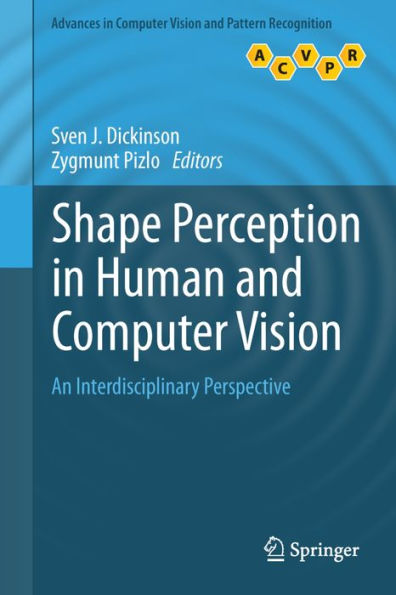Shape perception has always been important in vision research, yet it is now attracting more interest than ever before, fueling the need for an interdisciplinary approach that bridges the fields of computer vision and human vision.
This comprehensive and authoritative text/reference presents a unique, multidisciplinary perspective on Shape Perception in Human and Computer Vision. Rather than focusing purely on the state of the art, the book provides viewpoints from world-class researchers reflecting broadly on the issues that have shaped the field. Drawing upon many years of experience, each contributor discusses the trends followed and the progress made, in addition to identifying the major challenges that still lie ahead.
Topics and features: presents 33 contributions from an international selection of pre-eminent researchers from both the computer vision and human vision communities; examines each topic from a range of viewpoints, rather than promoting a specific paradigm; discusses topics on contours, shape hierarchies, shape grammars, shape priors, and 3D shape inference; reviews issues relating to surfaces, invariants, parts, multiple views, learning, simplicity, shape constancy and shape illusions; addresses concepts from the historically separate disciplines of computer vision and human vision using the same “language” and methods.
This interdisciplinary collection is essential reading for students and researchers seeking to understand the broader landscape of the problem in order to build their expertise on a firm foundation.
Shape perception has always been important in vision research, yet it is now attracting more interest than ever before, fueling the need for an interdisciplinary approach that bridges the fields of computer vision and human vision.
This comprehensive and authoritative text/reference presents a unique, multidisciplinary perspective on Shape Perception in Human and Computer Vision. Rather than focusing purely on the state of the art, the book provides viewpoints from world-class researchers reflecting broadly on the issues that have shaped the field. Drawing upon many years of experience, each contributor discusses the trends followed and the progress made, in addition to identifying the major challenges that still lie ahead.
Topics and features: presents 33 contributions from an international selection of pre-eminent researchers from both the computer vision and human vision communities; examines each topic from a range of viewpoints, rather than promoting a specific paradigm; discusses topics on contours, shape hierarchies, shape grammars, shape priors, and 3D shape inference; reviews issues relating to surfaces, invariants, parts, multiple views, learning, simplicity, shape constancy and shape illusions; addresses concepts from the historically separate disciplines of computer vision and human vision using the same “language” and methods.
This interdisciplinary collection is essential reading for students and researchers seeking to understand the broader landscape of the problem in order to build their expertise on a firm foundation.

Shape Perception in Human and Computer Vision: An Interdisciplinary Perspective
502
Shape Perception in Human and Computer Vision: An Interdisciplinary Perspective
502Related collections and offers

Product Details
| ISBN-13: | 9781447151951 |
|---|---|
| Publisher: | Springer London |
| Publication date: | 06/29/2013 |
| Series: | Advances in Computer Vision and Pattern Recognition |
| Sold by: | Barnes & Noble |
| Format: | eBook |
| Pages: | 502 |
| File size: | 9 MB |
